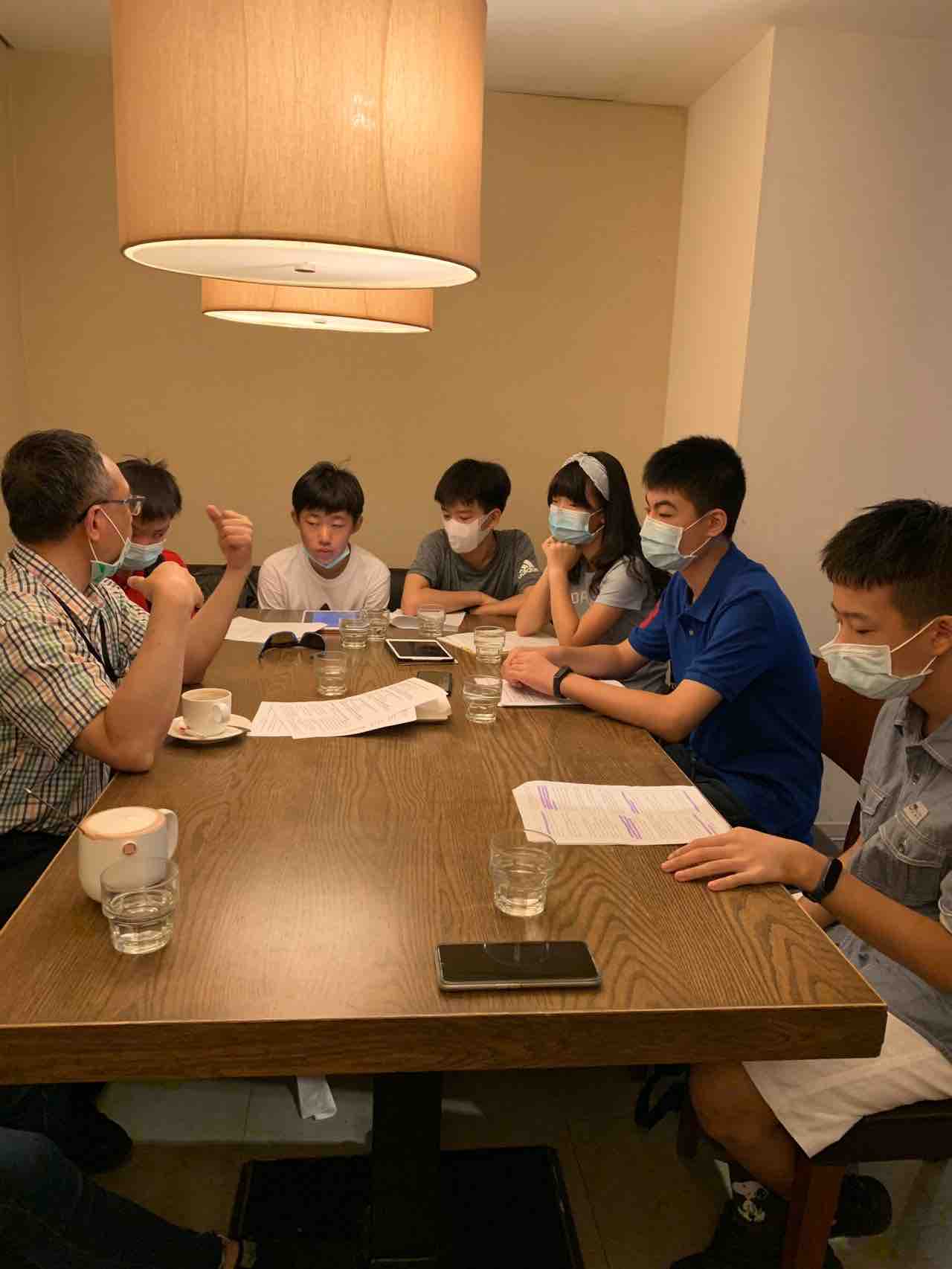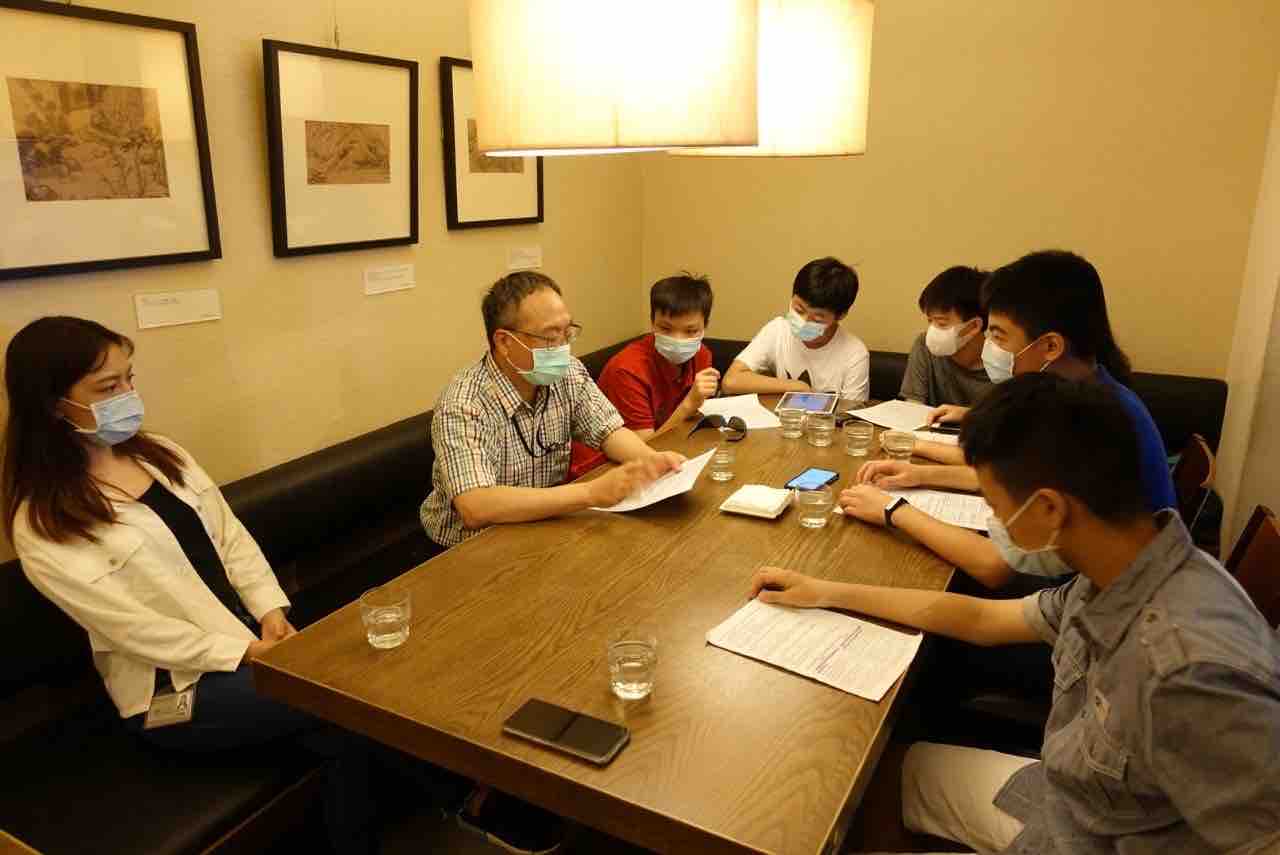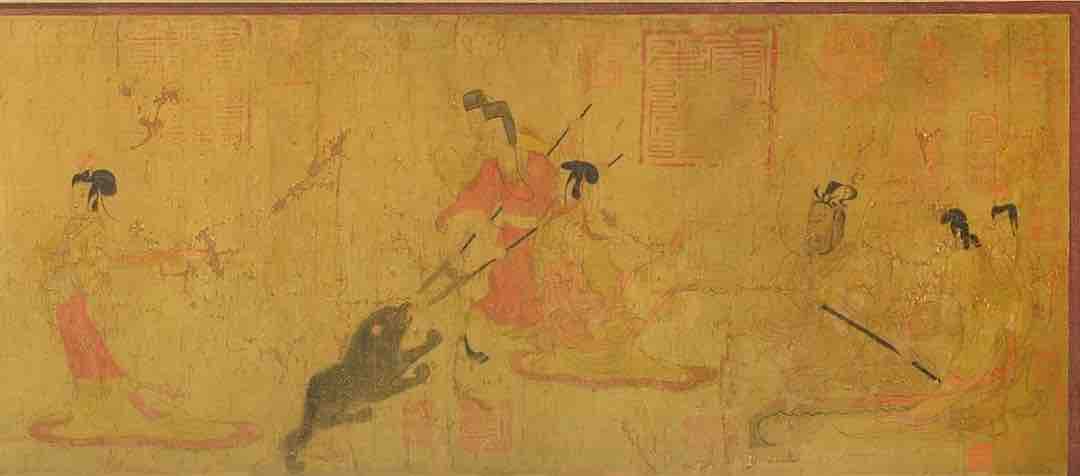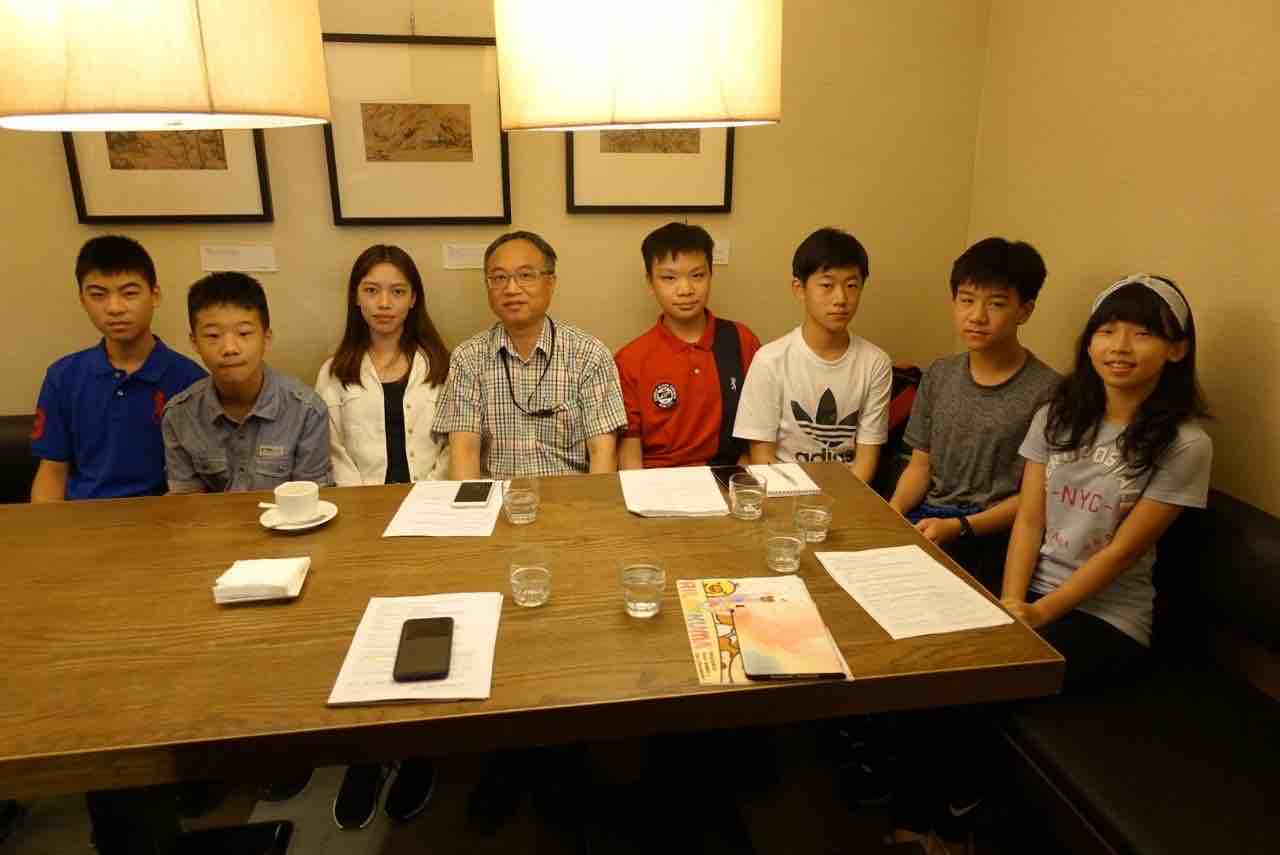Restorer Mr. Hong Interview
About Mr. Sun-hsin Hong
.JPG)
|
Occupation:
Head of Artifact Restoration Department in National Palace Museum Education:Tainan National University of the Arts Framing and restoring of paintings and calligraphies |
| 2011 | Part time assistant professor and curriculum advisory committee member of College of Letters and Cultural Heritage, Tainan National University of the Arts |
| 2005 | Part time lecturer of Art History, Tainan National University of the Arts |
| 2004 | Part time lecturer of Fine Arts, Taipei National University of the Arts |
| 2003 |
Master of Conservation of Cultural Relics and Museology, Tainan National University of the Arts
Assistant researcher in National Palace Museum, expertise in framing and restoring of paintings and calligraphies |
| 1991 |
Bachelor of Fine Arts, Taipei National University of the Arts
Established a studio for framing paintings and calligraphies |
Q & A
1. What inspired you to become a restorer?
The reason I chose this job actually has a lot to do with my own interests. When I was young, my favorite hobby was drawing. By high school, I knew I was destined to major in fine arts so I aimed at this direction. Furthermore, I realized that besides actually creating artworks, I also enjoy framing. To me framing is a way of preserving an artwork’s life and value. During college, I chose to study framing, after the class, I knew it was what I was genuinely interested in, and is a major factor that resulted in me choosing the job I have now.
2. In your opinion, which professional skill is the most difficult one to learn? How did you overcome it?
In my opinion, if one wants to exceed in a particular field, it would take at least 10 full years of experience. So, one would need to be completely focused when working, love the job, and find work that best suits you. In addition, one would need to pressure oneself to work on every assignment until it’s absolutely perfect to become the best professional personnel.
How to overcome this painstaking obstacle? I believe that enthusiasm and determination are crucial. Without those, one would give up immediately if one encounters a failure, and lose the will and courage to stand up again and move on.
Everyone has potential, but in order to stand out, we have to rely on our experience and self-cultivation to develop a habit of a continuous and fixed learning habit, to let us gain more knowledge, to let us mature.
3. As the leader of the group, what quality or skill do you base on to assign each person’s assignment?
Imagine that when you are the monitor of your class, you need to assign different tasks to your students based on their abilities and backgrounds. We face a similar situation in restoration work. Our team has grown from three to six, and each person received different education and training related to the restoration of the artifacts. Everyone has different industry experience, as well as different training and experience after entering the National Palace Museum. As a result, when I receive a new task, I will assign it only to the person most suitable for this job.
For example, the restoration of paintings, calligraphy, and documents can be divided into three types. Some are framed and belong to relatively modern cultural relics. Some are long hanging down, called hanging scrolls; there are banners, and scrolled, called albums. The artifacts will have different materials, and the required techniques will be different. I will assign tasks based on the experience and expertise of each restorer.
4. Do you have any experience of failing to restore a work?
 Before I restored it, the artwork was tattered and cracked, the whole restoration process of this work took
me three years. During that time, I kept figuring out how to make it shine like it originally did. The
challenge and pressure were overwhelming, but it was an unforgettable experience.
Before I restored it, the artwork was tattered and cracked, the whole restoration process of this work took
me three years. During that time, I kept figuring out how to make it shine like it originally did. The
challenge and pressure were overwhelming, but it was an unforgettable experience.
To be honest, I failed often, but failure is not something to be ashamed of. The important thing is, what do
I gain from this failure? When I made a mistake, I feel really conspicuous and self-blaming. “What if I
exchange the fifth and sixth steps?” “Would there be a better result?” I often asked myself these questions
over and over again. The whole situation makes me even more anxious, yet, I will tell myself I should not
give up, I will do better next time.
5. Is there any artwork becoming more famous after you restored it? Please share with us.
To a professional restorer, all artifacts are supposed to be treated at the same level, just like how a doctor wishes that the patients he is caring for are receiving the same level of care. But sometimes it is hard to achieve.
When restoring artifacts, we usually divide them into different levels: normal artifacts, important artifacts and national treasures. But the artifact you are restoring differs in levels, it might let you feel like you are being classified into different categories. If you hear that Mr. Hong is restoring a national treasure compared to Mr. Hong restoring normal artifacts, does it feel like a big difference?
 I remember that the first artifact I restored when I first arrived at the National Palace Museum was a piece
called Songren Caizhixian. It was a silk product made by people of the Song Dynasty. Although it is not a
national treasure, it is greatly significant to me. At the time, I tried my best to restore this artifact so
perfectly that the fairies with damaged faces will become fairies after beautification.
I remember that the first artifact I restored when I first arrived at the National Palace Museum was a piece
called Songren Caizhixian. It was a silk product made by people of the Song Dynasty. Although it is not a
national treasure, it is greatly significant to me. At the time, I tried my best to restore this artifact so
perfectly that the fairies with damaged faces will become fairies after beautification.
Over the past ten years, I have also restored some important national treasures, such as helping the National Taiwan Museum to restore a portrait of Zheng Chenggong. Zheng Chenggong is a very important and highly respected historical figure in Taiwan, so crucial to the Taiwanese that he is treated like a deity. Many places have a temple named after Zheng Chenggong. The portrait of Zheng Chenggong we see normally today is the one at the National Taiwan Museum.
I remember when the piece was sent for restoration, the whole painting was peeling. It was very miserable sight. Few people dared to touch it, because the colour began to fade when touched. After careful planning, it took me about one and a half years to complete the restoration. This was the first national treasure I have restored.
Recently, I also restored a national treasure called "Zhou Zi Tong Shu" (Zhou Zi is Zhou Dunyi) in the National Palace Museum. This is the work of Ming Dynasty calligraphy master, Dong Qichang. In the restoration process, all creases and cracks should be eliminated. After the restoration and recording work was successfully completed, a small restoration exhibition was held specifically for this purpose to let the public understand the whole process of restoration.

6. Have you ever been consulted by foreign restorers about restoring artifacts?
Although the museum is relatively regional, it is not a separate or isolated environment. It can be seen through my experiences and is the trend of artifact restoration.
Part of the formal training at my school included a full year of internship. We could choose either domestic or foreign museums. The first museum I went to was the National Museum of China, which is a very large-scale museum. The second one was the Shanghai Museum. The third one I went to that was the museum in Washington, D.C., where there were many Chinese paintings and calligraphy. Finally, I went back to Taiwan, to the National Palace Museum. During this whole year of internship, I went to large museums all over the world. I think this kind of training is essential because the job of restorers is not a private enterprise; we must cooperate with museums all over the world to create exhibitions. Therefore, we frequently go to other museums to share restoring experiences, especially if they have collected large amounts of Chinese artifacts. I have been to the British Museum. They have one of the most important artifacts of Chinese history, the “Nüshi Zhen tu” -- the 女史箴图 (Admonitions of the Instructress to the Court Ladies). It is considered as the artifact with the most history. At that time, the British Museum had been trying to solve the problem relating to the installation of this scroll. Therefore, the British Museum invited and paid for the accommodation and other expenses of the restorers from the National Palace Museum in Taiwan, the Shanghai Museum, the National Museum of China in Beijing, and several major museums in the United States to discuss the preservation and maintenance of this work.
Another intellectual exchange was when a restorer from the United States visited us in Taiwan. We invited him to present a keynote speech for a lecture. After that, we also visited his museum and exchanged ideas. The exchange and mutual learning between museums is a natural process and experience.

Reference: "A Nüshi zhen tu 女史箴图 (Admonitions of the Instructress to the Court Ladies)" https://artouch.com/view/content-11859.html
Reference: "A Nüshi zhen tu 女史箴图 (The British Museum Collection Database)" https://www.britishmuseum.org/collection/image/796110001
7. Which part of your job is the most challenging?
People have different things to accomplish at different stages. Because I am a restorer, when I was young, I focused on restoring artifacts. As I aged and my place in the museum was promoted, the variety of jobs for me increased.
I am now the head of the section, so I am not only restoring, but also managing the entire department. Because the museum hopes to change with each passing day, there will be new spaces, so I have more jobs to do now, such as remodeling, and the new hall in the south wing of the National Palace Museum. Now I’m going to make a plan based on the work experience I have accumulated in the past. I may divide this space to 20 people at a time, or use these spaces as places for education purposes, and place virtual reality for human-robot interaction in the exhibition hall to make learning easier, so there are more things I have to think about, and this is the challenge I have to face.
In this challenge, I must not only regard myself as a restorer, but also be responsible for planning for the whole department. Restorers may encounter some problems which exceed his own field, and find the solution for it is also one of my responsibilities.
8. Has restoring artworks changed or affected you in any way?
Restoring artworks, I became more sensitive to the temperature and humidity in the environment. I will be very uncomfortable if I am in a very humid place. I must turn on the air conditioner when I go to bed. The temperature at home must not be too high and the humidity must be controlled. I feel like I am an artifact.
Besides, there is a bad habit I seem to have. When I visit a museum, I only focus on the problems instead of the beauty of art, despite being an art major. Perhaps this is what they call an “occupational hazard” of restorers. I feel like I need to fix this on my own, to look at this art’s beauty first then seeing if there is a better way to preserve it.


